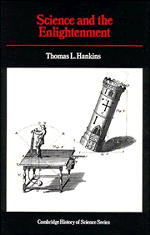I - The Character of the Enlightenment
Published online by Cambridge University Press: 05 February 2015
Summary
In 1759 the French mathematician Jean Lerond d'Alembert (1717—83) described a revolution that he saw taking place in natural philosophy:
Our century is called … the century of philosophy par excellence. … The discovery and application of a new method of philosophizing, the kind of enthusiasm which accompanies discoveries, a certain exaltation of ideas which the spectacle of the universe produces in us — all these causes have brought about a lively fermentation of minds, spreading through nature in all directions like a river which has burst its dams.
This revolution came to be called the Scientific Revolution, a cultural event associated with great names like those of Galileo Galilei (1564–1642), Johannes Kepler (1571–1630), René Descartes (1596–1650), and Isaac Newton (1642–1727). D'Alembert obviously believed that it was a revolution still in progress in 1759 and one that was continually accelerating. Natural philosophy could never be put back in its former course. As d'Alembert observed, “Once the foundations of a revolution have been laid down it is almost always the succeeding generation which completes that revolution.” The seventeenth century had begun the revolution; the eighteenth century would complete it.
The expression “Scientific Revolution” had been coined by mathematicians like d'Alembert, and it was mathematics that appeared to them as the greatest revolutionizing force. In 1700, Bernard le Bovier de Fontenelle (1657–1757), “perpetual secretary” of the Paris Academy of Sciences, first talked about an”almost complete revolution in geometry” that had begun with the analytic geometry of Descartes.
- Type
- Chapter
- Information
- Science and the Enlightenment , pp. 1 - 16Publisher: Cambridge University PressPrint publication year: 1985



